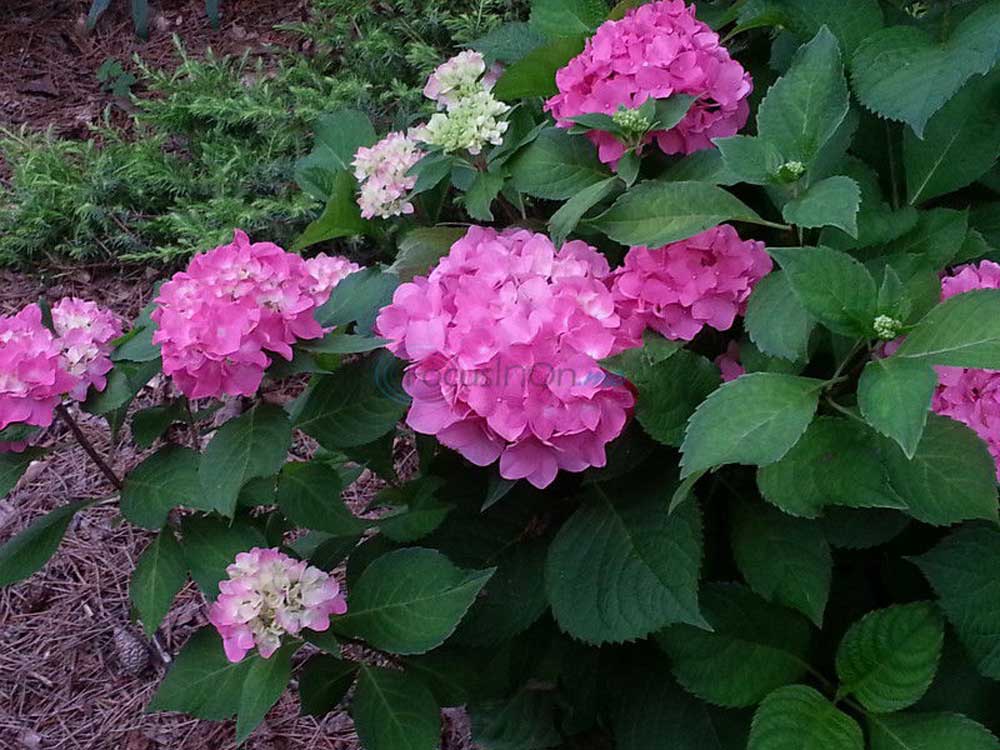As azalea season passes, try hydrangeas for lat spring color
Published 8:58 pm Wednesday, June 3, 2015
As springtime azalea blooms fade, it is nice to have other plants step in to fill the gap with color. One group of plants that flaunt large trusses of flowers are the hydrangeas.
Oakleaf hydrangea is a wonderful plant that provides year-round interest with its large leaves, attractive white blooms and interesting bark and growth habit. It blooms in early to late May, often along with our native, white blooming Rhododendron oblongifolium (Texas azalea) and a late-blooming pink Wakaebisu azalea, making an interesting contrast in color and form.
Oakleaf hydrangea (Hydrangea quercifolia) is an outstanding shrub for East Texas. Native to the southeastern United States, this deciduous, medium-sized shrub (6 to 8 feet tall) has several characteristics that make it a real winner. First, it prefers a partly shaded site, which is usually not too hard to find in East Texas. Morning or evening sun is ideal. It will grow in sunnier spots with well-mulched, evenly moist soil. Newly planted specimens will tend to wilt during the day in sunnier locations the first year.
In May and June, Oakleaf hydrangea bears large, attractive, showy, conical inflorescences of creamy white flowers. There are many named cultivars, but all will provide these stunning white flowers, which are held above and set off by the large leaves. Flower clusters can range from 4 inches to 12 inches long and 3 inches to 4 inches wide. The flower clusters later turn pinkish and then persist as a brown papery cone into fall and winter.
Continuing the show in fall, the large (up to 8 inches), oak-shaped leaves (which are attractive all summer) turn a reddish purple or burgundy before dropping in the winter to expose attractive exfoliating bark up and down the upright branches. Leaf color will be more pronounced for plants in sunnier locations. The bark begins peeling on 3-year-old stems to reveal a rich, dark brown inner bark.
BOLD TEXTURE
Use Oakleaf hydrangeas wherever a bold texture is needed, such as an accent plant, in a naturalized shrub border, in front of tall evergreens, on the edge of a wooded lot or near water.
Oakleaf hydrangea has very few pests, is hardy, tolerates a wide range of soil and moisture conditions, is long-lived and readily available. Just give it room to grow.
Mention hydrangea and most folks will right away think of what is commonly called the “French” or Bigleaf hydrangea (Hydrangea macrophylla). This showy shrub is not from France but was extensively hybridized by the French about 100 years ago. An oriental native, there are now two groups of bigleaf hydrangeas, the hortensias and the lacecaps. The hortensia group is the one seen most frequently around homes, bearing large clusters or balls of pink or blue flowers. The lacecaps have a center of flowers surrounded by a ring of showy flowers, giving a delicate, lacy appearance.
There are hundreds of varieties, and many newer types coming on the market that will rebloom on new growth, providing a longer period of color.
The Latin “Hydra” in its botanical name means water, and that gives you a clue that these large-leaved plants need a lot of water during the summer to keep leaves and flowers from wilting.
SOIL INDICATOR
Hydrangeas do best with a lightly shaded exposure, in rich, well-drained, loamy soil with a thick mulch 4 inches deep to maintain soil moisture. Hydrangeas are like living litmus paper because the color of the blooms will tell you whether your soil is acid or alkaline. Strongly acidic soil (pH 5.0-5.5) produce blue blooms, while less acidic soil (pH 6.0-6.5) soils turn the flowers pink. Most East Texas soils are acid, and if you’d like pink blooms, apply lime in the fall to change the color next summer. Aluminum sulfate, sulfur or ferrous sulfate will acidify the soil and help promote bluer flowers. It is actually the available aluminum content of the soil, which is correlated to the acidity of the soil, that affects the blueness of the blooms.
Sometimes a single plant may have shades of both pink and blue at the same time due to varying pH in the soil around the plant. “Nikko Blue” and “Merritt’s Blue” are two popular cultivars with stable blue flowers.
Bigleaf hydrangeas can be used as an accent plant and in shrub borders, mixed with other evergreen and deciduous plants. They look best when periodically pruned. Be sure to prune right after they finish blooming because flower buds are formed in late summer and fall. Remove stems that have bloomed and leave stems that have not bloomed. The stems may look dead in winter, but they contain the leaf and flower buds for next spring. A severe winter may eliminate next year’s blooms.
Finally, Hydrangea paniculata is another type that blooms later in summer and is worth growing for variety. There are many new varieties on the market, and you don’t see a lot of them grown in our area for some reason. I have a couple, and like them a lot. It takes them a while to get going, it seems, and like the big leaf hydrangea, they do best where there is an ample water supply. Like most hydrangeas, morning sun and afternoon shade is ideal.
Keith Hansen is Smith County horticulturist with the Texas A&M AgriLife Extension Service. His web page is http://EastTexasGardening.tamu.edu. His blog is http://agrilife.org/etg. Find him on Facebook at facebook.com/easttexasgardening.







